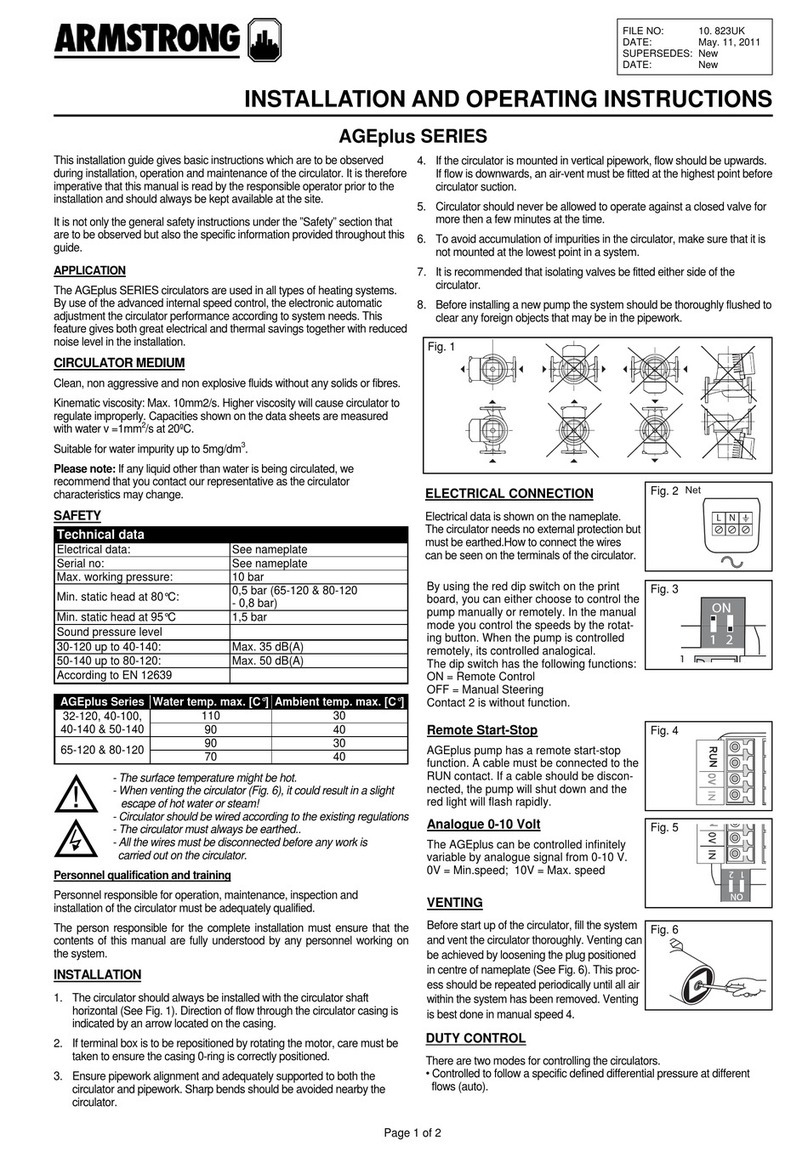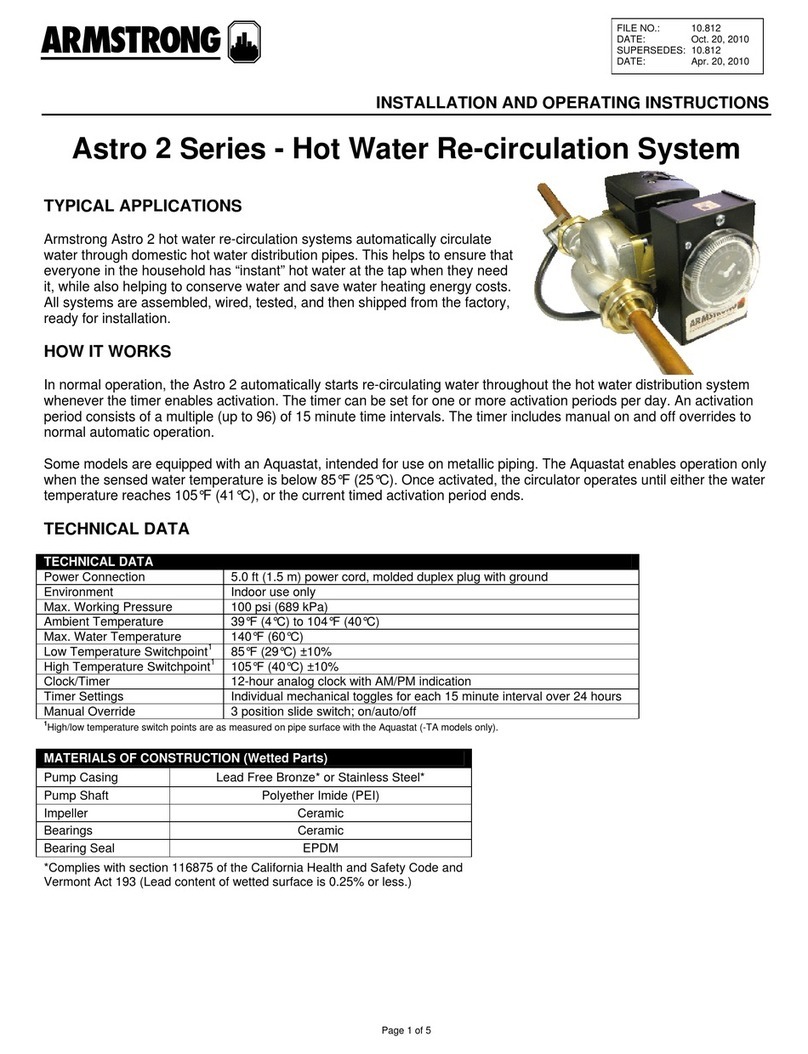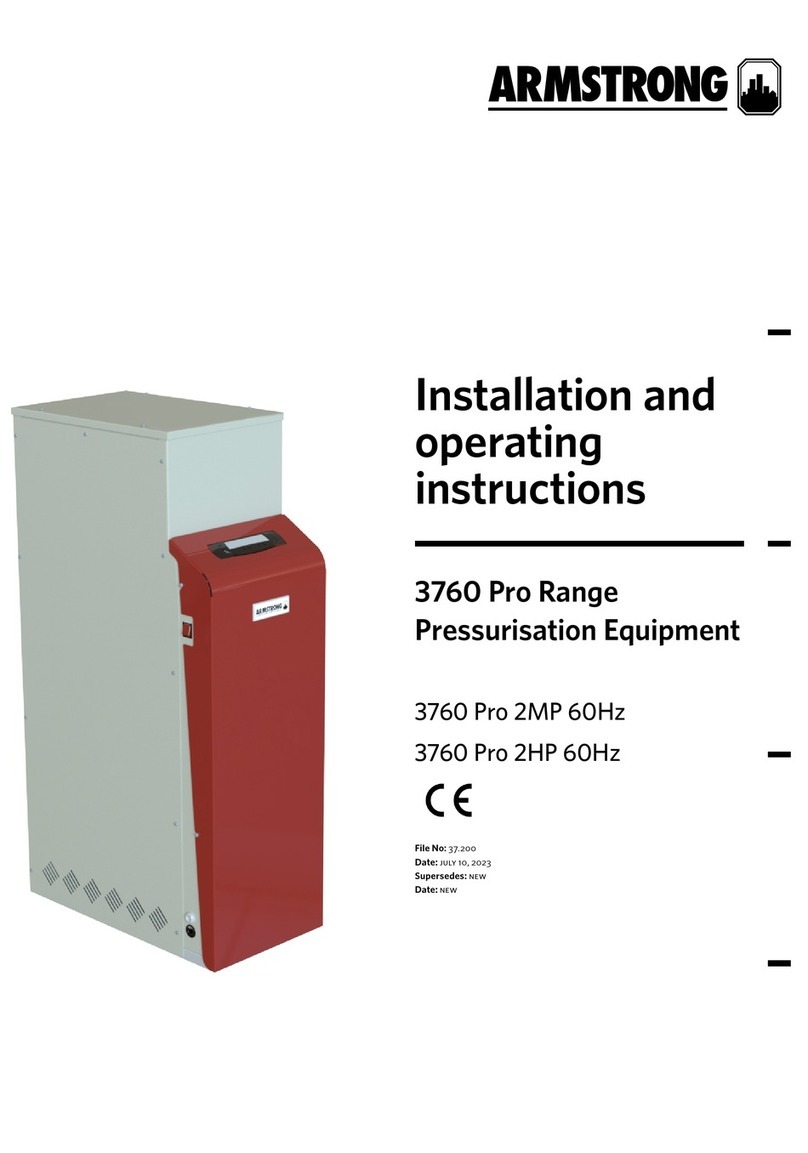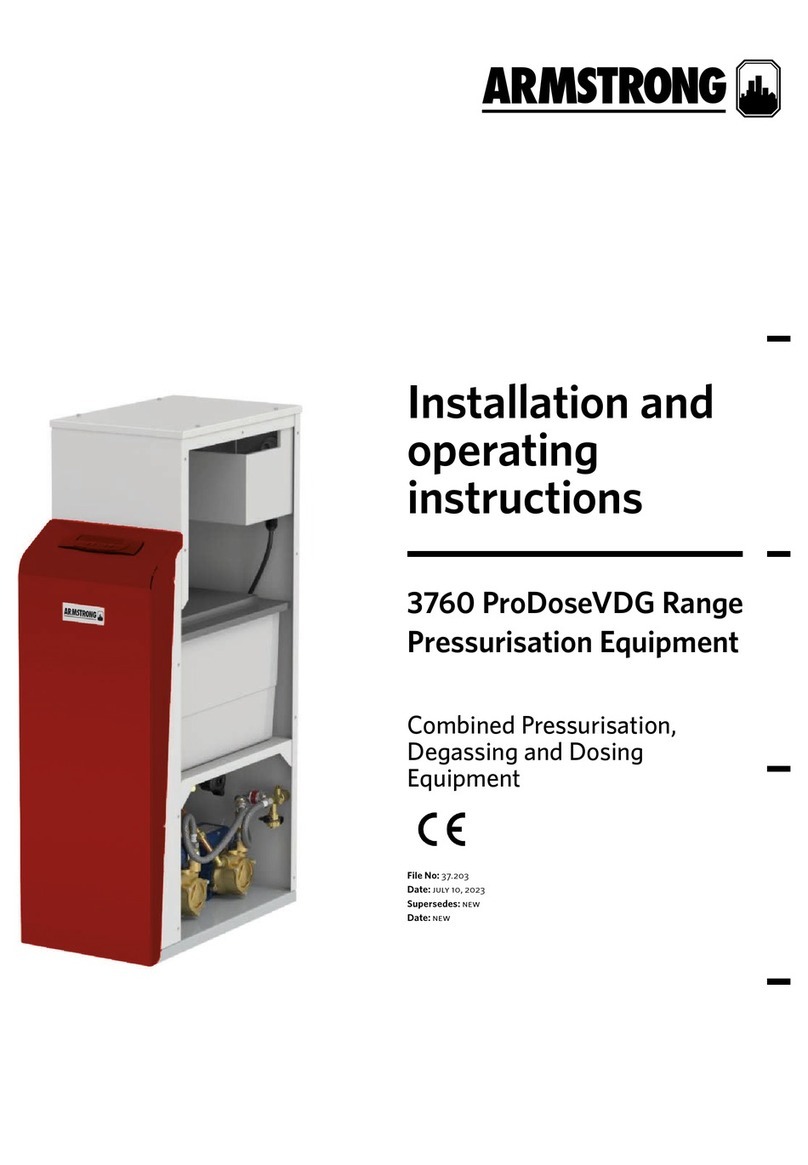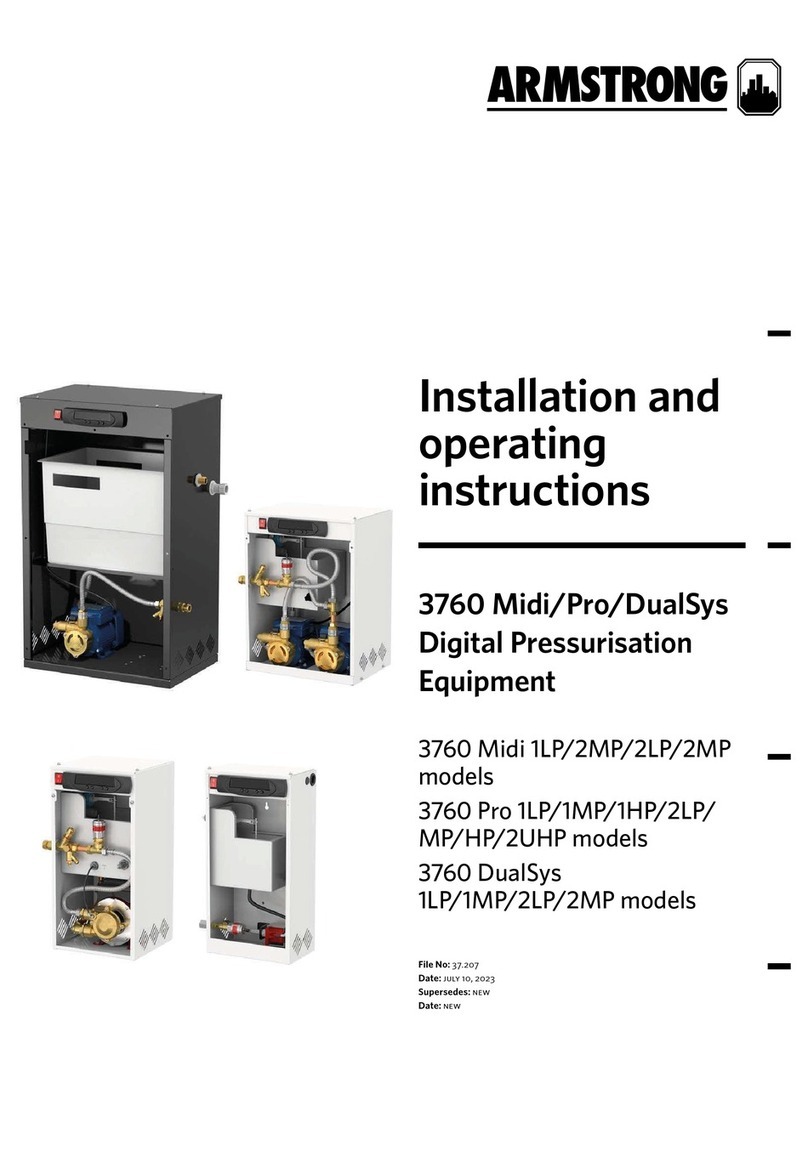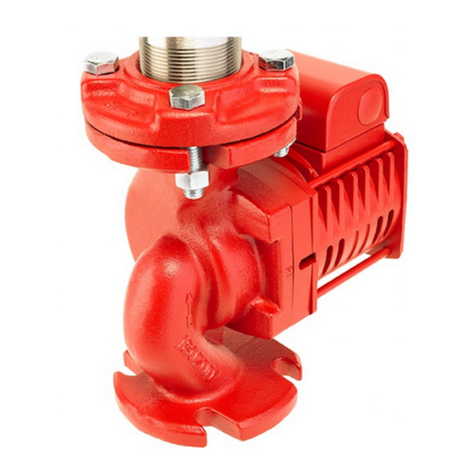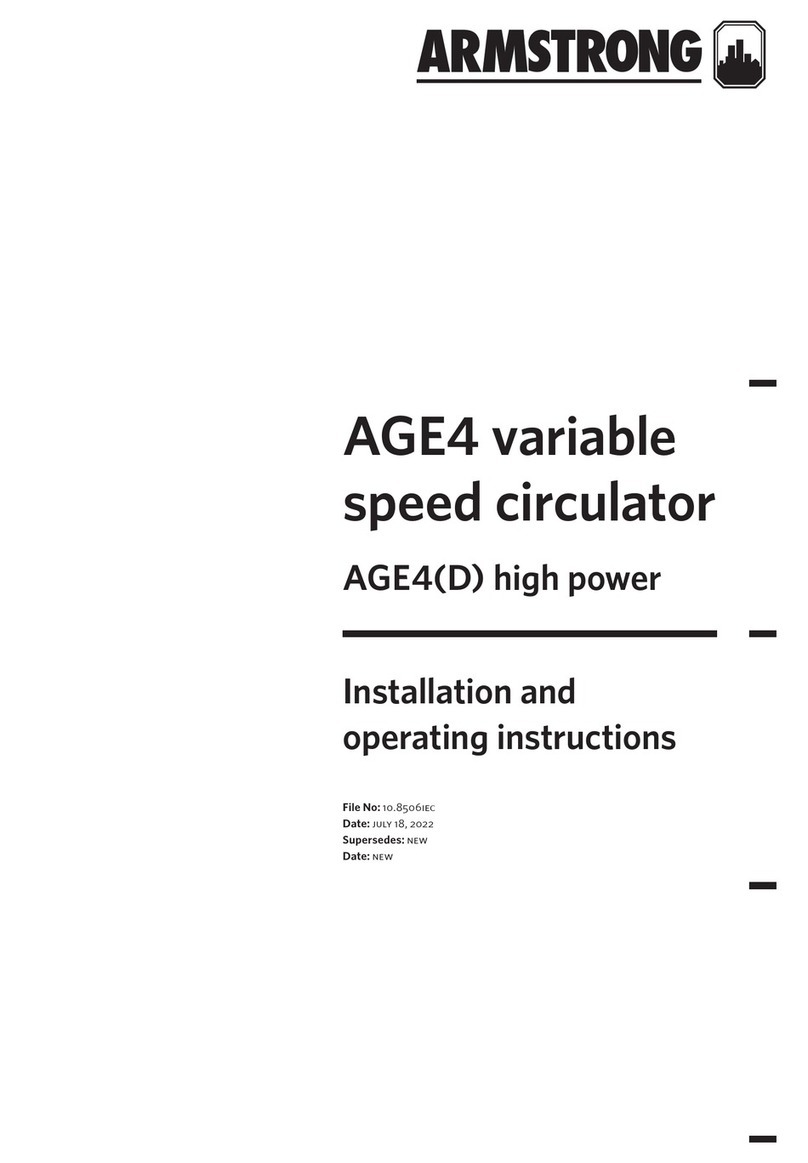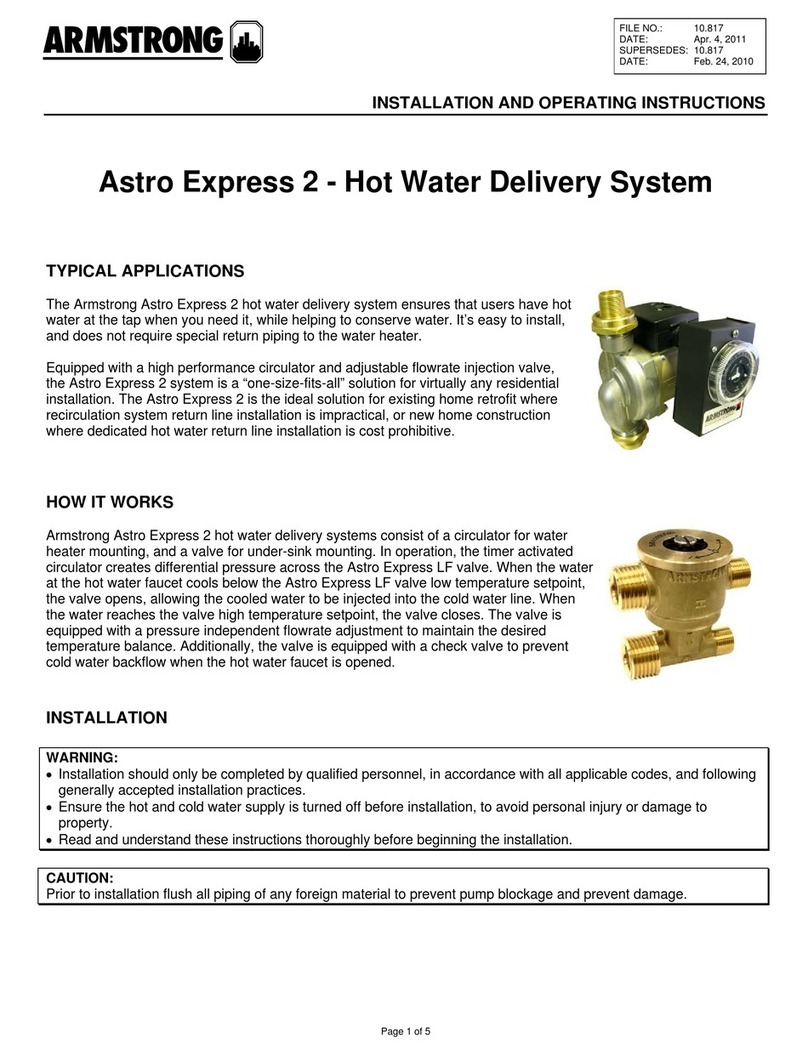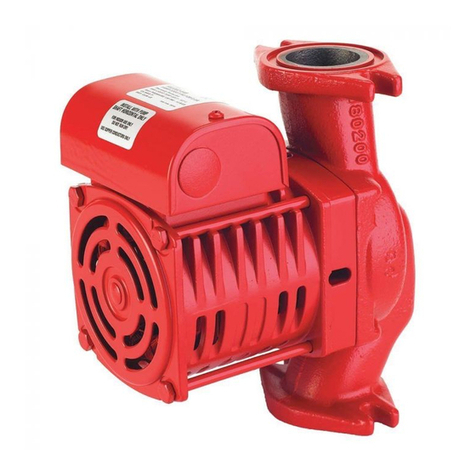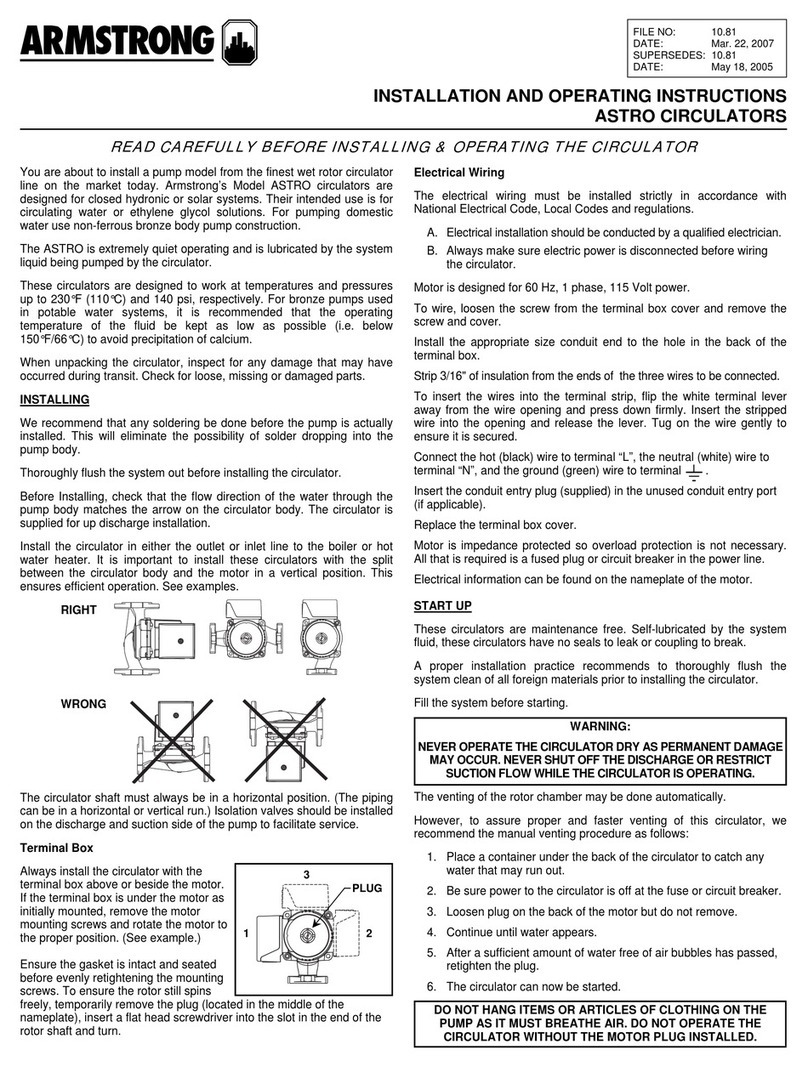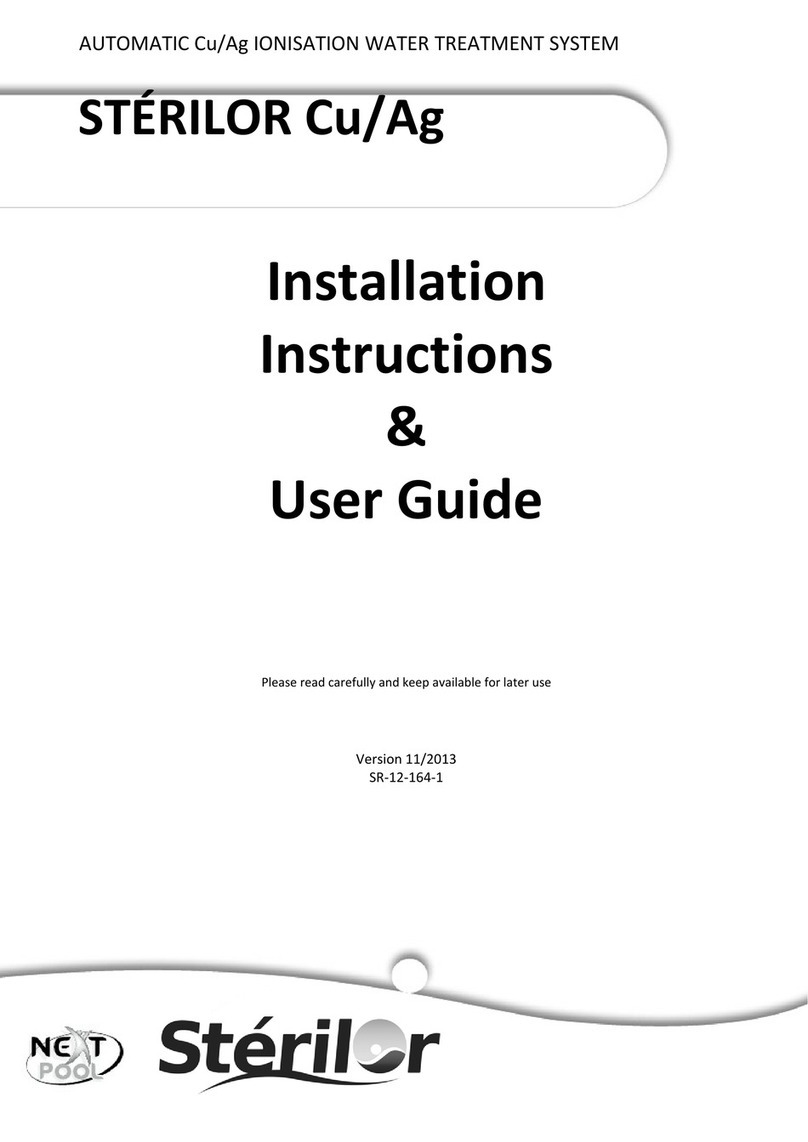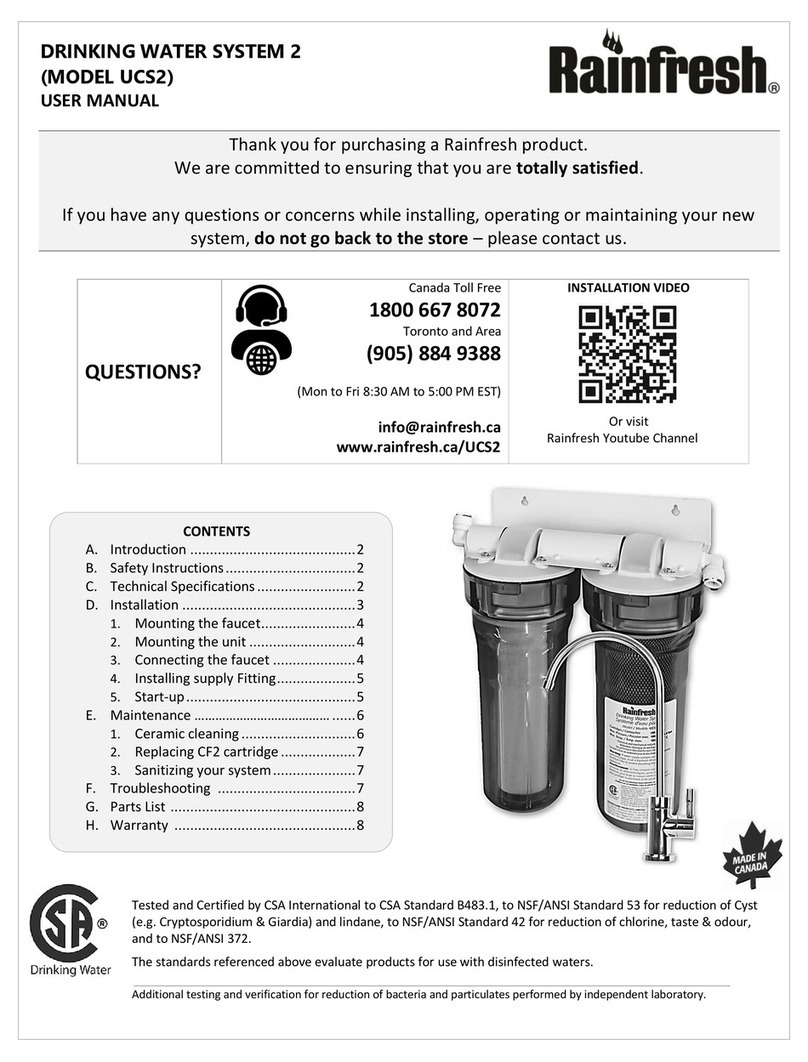
Page 1 of 2
AG SERIES
INSTALLATION AND OPERATING INSTRUCTIONS
FILE NO: 10. 822IN
DATE: Nov. 02, 2010
SUPERSEDES: New
DATE: Apr. 12, 2010
This installation guide gives basic instructions which are to be
observed during installation, operation and maintenance of the
circulator. It is therefore imperative that this manual be read by the
responsible person / operator prior to the installation and should
always be kept available at the site. It is not only the general safety
instructions under this main heading “Safety” that are to be observed
but also the specific information provided under the other main
headings.
Serial No.: See nameplate
The “AG” CIRCULATORS are available in:
Dark blue model for heating and chilled water (20-50% Glycol
solution).
Yellow model for secondary hot water application.
CIRCULATOR MEDIUM
Clean, thin non-aggressive and non-explosive fluids without any solids
or fibres. Antifreeze without any mineral oil (special model upon
request)
Please note: If any liquid other than water is being circulated, we
recommend that you contact our their representatives as the circulator
characteristics may change.
SAFETY
- The surface temperature might be hot.
- When venting the circulator (fig. 5),
it could result in a slight escape of hot water or steam!
- Circulator should be wired in line with the existing
regulations.
- The electrical supply to the circulator is to be
switched off before adjusting the speed plug.
PERSONEL QUALIFICATION AND TRAINING
Personnel responsible for operation, maintenance, inspection and
installation of the circulator must be in possession of the necessary
qualifications for this kind of work.
Furthermore the owner should assure that the contents of the operation
manual is understood by his personnel.
Airborne Sound pressure level (distance 1 m)
max 55 dB (A)
TRANSPORT, HANDLING AND STORAGE
INSTRUCTIONS
a. Transport
i . AG circulators are despatched fully assembled.AG
circulators are packed for transport by road, sea and air carriers.
b. Handling
i. Crushing Hazard.
ii. When lifting an AG circulator above a weight of 25 kg,
use lifting equipment having a safe working load rating suitable
for the load specified. Use suitable slings for lifting any
circulator.
c. Storage
i. Short term Storage (six weeks). If the AG circulator is not to be
installed immediately after unpacking, then it is to be be stored
in a cool dry dust free location.
ii. Long term storage. If the AG circulator is not to be installed for
period of longer than six weeks after receipt on site, then it is to
be retained in its packing case. If the casing case is disposed
of, then the inlet and outlet connections are to be blanked off
with suitable clean covers to prevent ingress of damaging solids.
INSTALLATION
1. The circulator should always be installed with the circulator
shaft horizontal, see Fig. 1. Direction flow through the
circulator casing is indicated by an arrow.
2. Ensure pipework alignment is correct and the circulator and
pipework are adequately supported. Sharp bends should be
avoided adjacent to the circulator.
3. If circulator is mounted in vertical pipework, flow should be
upwards. If flow is downwards, an air-vent must be fitted at
the highest point before circulator suction. This applies
especially with yellow AGB circulators, which should be vented
regularly.
4. Circulators should never be allowed to operate for a long
period in a closed valve condition.
5. Circulators should never be installed with terminal box facing
downwards. If terminal box is repositioned by rotating head,
care must be taken to ensure the casing “0” ring is correctly
positioned.
6. To avoid accumulation of impurities in the circulator, ensure
that it is not mounted at the lowest point in a system.
7. It is recommended that isolating valves are fitted on either side
of the circulator.
8. System should be thoroughly flushed out to clear any solder,
steel wool, plaster or any other foreign matter that may be
lodged in the circulator.
Technical data
Electrical data: See nameplate
Max. working pressure: 10 bar
Min. static head at 82°C: 2-3m (dependent upon model)
Min. static head at 95°C 4-6m (dependent upon model)
- 15° C to + 120° C.
-15° C to + 65° C, (when used for
secondary hot water)
Temp. Model “C”
a
N
Fig.1
L
Thermal overload
protection
N
L
N
1-phase
L
b
1
NU
V
W
L
a
Thermal overload
protection
bN
LU1
V1
W1
W2
U2
V2
1X230/240V
